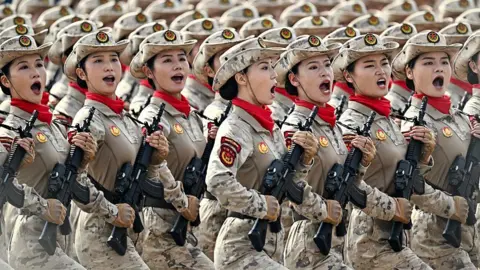China has unveiled a range of new weapons, drones and other military hardware in a massive parade that many see as a clear message to the United States and its allies.
The event saw Xi Jinping host more than 20 foreign heads of state, including Russia's Vladimir Putin and North Korea's Kim Jong Un, both of whom rely on China for economic support and more.
It was a display of Xi's growing power on the world stage, and of China's military prowess - the show included the 'Guam killer' missile, the 'loyal wingman' drone and even robotic wolves.
Beyond the hype and shiny new weaponry, what did we learn? Here are our five takeaways.
1. China has a lot of weapons. How well can it deploy them?
China has been able to quickly produce a diverse range of weapons. A decade ago, the military technology displayed tended to be 'rudimentary copies' of far more advanced equipment invented by the US, but this parade revealed a more innovative and diverse range of weapons, particularly drones and missiles.
China's capacity to churn out munitions and other military assets puts it in a strong position; however, questions remain regarding how effectively these systems can be integrated into military operations.
2. China is focusing on missiles to counter the US
China showcased a variety of new missiles, including variants capable of carrying multiple warheads, as part of its strategy to counter U.S. naval power. This heightened emphasis on missile technology reflects China's ongoing efforts to enhance its deterrence strategies against its rivals.
3. China is going all the way with AI and drones
The parade included AI-powered drones and a notable submarine drone, indicating China’s commitment to integrating advanced technology into its military strategy. The display highlighted China's desire to augment traditional military structures with AI capabilities to achieve quicker decision-making in combat scenarios.
4. China may have the technology, but the US still has an edge
Despite advancements, analysts suggest that the U.S. military retains operational superiority through its agile, bottom-up decision-making culture, which contrasts with China's top-down structure.
5. The parade was a weapons sales pitch – and a chance to show the US a united front
The international attendance at the parade served not just as a display of military capabilities, but also as a strategic maneuver to promote Chinese military technology to potential buyers among allied nations, while presenting a solidified front against perceived Western aggression.





















